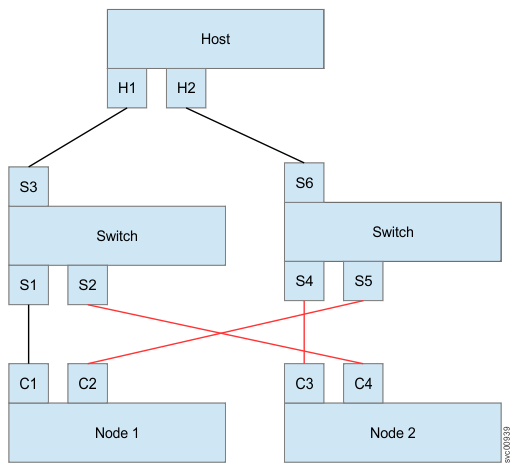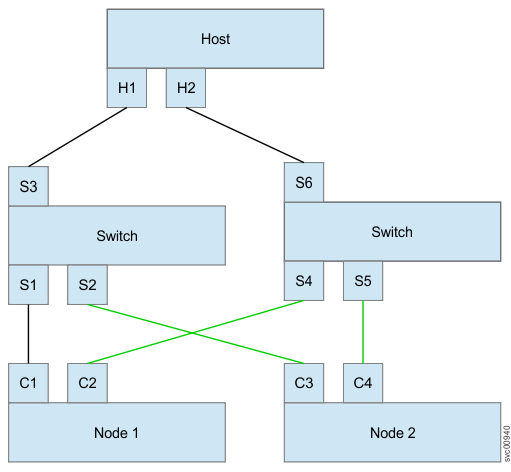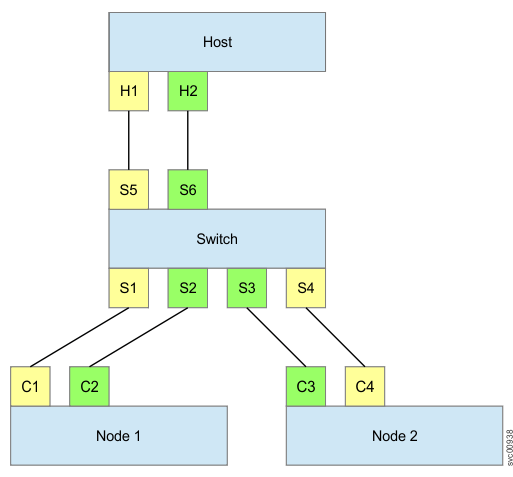More layout and zoning requirements are necessary for an N_Port ID Virtualization (NPIV) configuration in comparison to Fibre Channel host attachment without NPIV. These requirements follow from the fact that NPIV port failover between nodes must be transparent to hosts. Hence, the set of host ports on which an NPIV port is visible cannot change as a result of a failover.
The port ID of a virtual port remains constant regardless of the node that it is active on. Each port ID n of the two nodes of an I/O group must be attached to the same fabric. Ports of n of the two nodes of an I/O group must be attached to the same fabric while ports of different n can be on different fabrics. Figure 1 shows a configuration that is not valid.

The connections to switch ports S2, S4, and S5 should be exchanged, leading to the following correct configuration that is shown in Figure 2.

It is also possible to trigger the same effect within a single fabric when you employ hard (port-based) zoning as shown in Figure 3.

Two nodes are connected to one host via one switch. However, port-based zoning is used to ensure that each port of the host can detect only one port of each node. S1, S4, and S5 are in one zone; and S2, S3, and S6 are in the other zone.
During an IP failover, NPIV ports move from C1 to C3 and C2 to C4 (or vice versa). The configuration is not valid with NPIV as the visibility of ports move between H1 and H2. If you use port-based zoning in this situation, the zones need to be S1, S3, and S5; and S2, S4, and S6.
This situation does not arise within a single switch for soft (WWPN-based) zoning. However, care needs to be taken in a multiswitch fabric where the node-to-host route passes through different switches for the two nodes in an I/O group.
If fabric changes are required, make them before you switch each I/O group to transitional state. After you switch to transitional state, an attempt is made by the system software to warn about mismatched fabric issues. It does not warn about issues caused by port-based zoning.
Failure to adhere to the fabric zoning rules might cause undesirable behavior on the host during NPIV port failure. Examples include a 2-minute pause in I/O or reduced path redundancy.